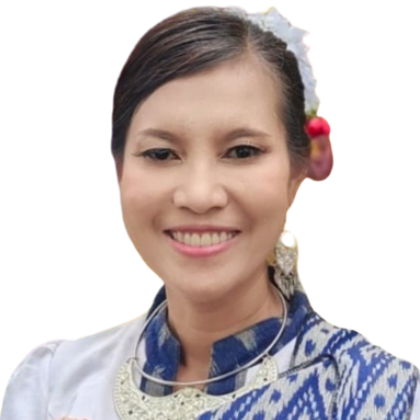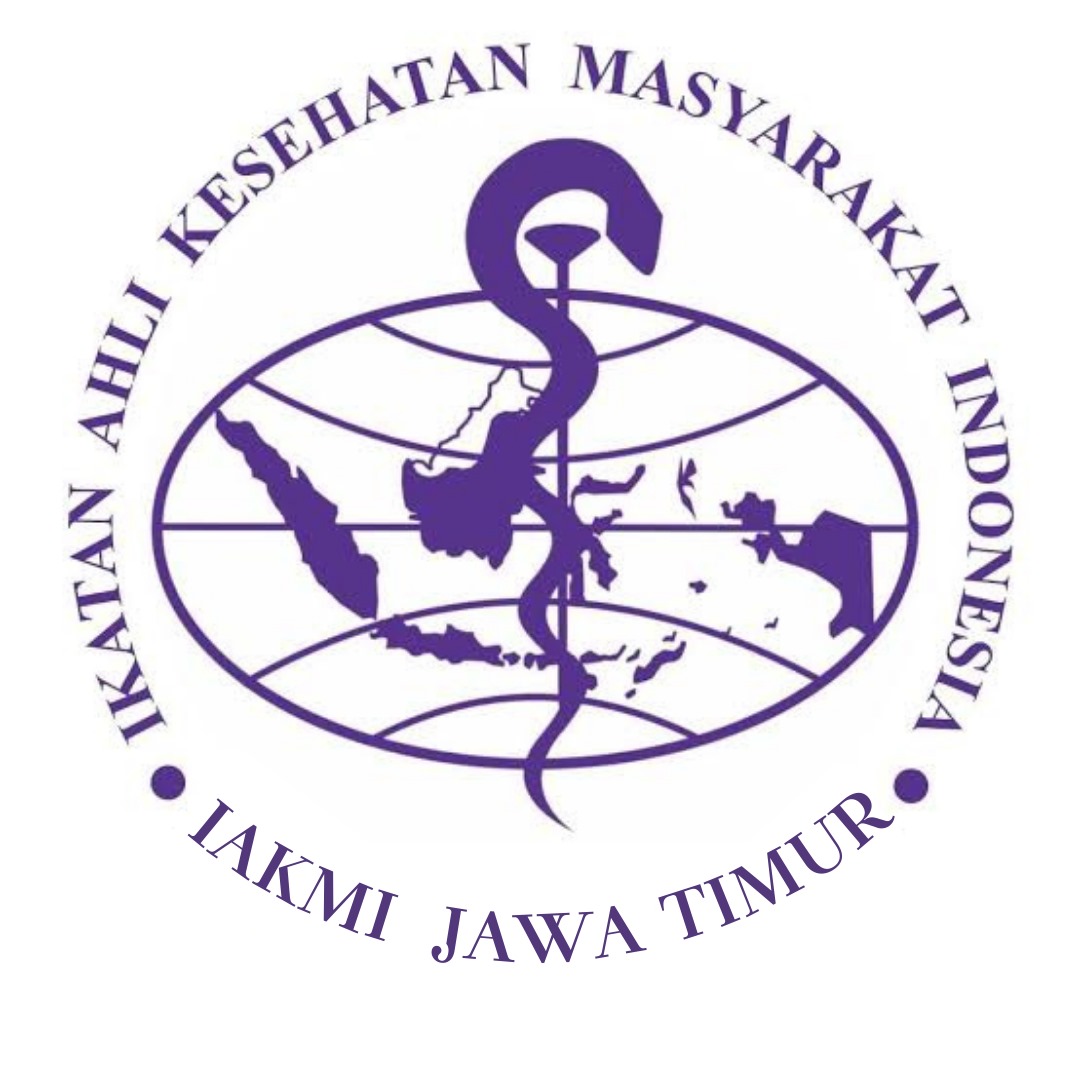Climatic Factors Related to the Incidence Rate of Dengue Haemorrhagic Fever in Malang District Year 2011-2020

Background: As a tropical country, Indonesia is one of the highest contributors to dengue cases. In the last four years, Malang Regency has increased in rank as the region with the highest dengue cases in East Java East Java Province. The increase in DHF cases will be followed by an increase in the Incidence Rate. Global warming causes fluctuations in the climatic factor. The increase and decrease in climatic elements can affect mosquito's life cycle as vectors of the dengue virus carriers
Objectives: This study aims to analyze the relationship between climate elements in the form of rainfall, air temperature, humidity, and wind speed with the incidence rate of monthly dengue cases in Malang Regency in 2011 – 2020.
Methods: This study was a quantitative study with an ecological study design using secondary data. The sample in this study used total sampling and analyzed univariately to describe the frequency distribution and bivariate analysis using Spearman's correlation to identify the degree of closeness of the relationship.
Results: The results of this study indicated that there was a relationship between the incidence rate of dengue fever and climate elements in the form of rainfall (p = 0.005), air temperature (p = 0.003), humidity (p = 0.000) and wind speed (p = 0.000).
Conclusions: The climatic factors related to cases of Dengue Hemorrhagic Fever are rainfall, air temperature, humidity, and wind speed.
Alkhaldy, I. (2017) ‘Modelling the association of dengue fever cases with temperature and relative humidity in Jeddah, Saudi Arabia”A generalised linear model with break-point analysis', Acta Tropica, 168, pp. 9–15. doi: 10.1016/j.actatropica.2016.12.034.
Cheong, Y. L. et al. (2013) ‘Assessing weather effects on dengue disease in Malaysia', International Journal of Environmental Research and Public Health, 10(12), pp. 6319–6334. doi: 10.3390/ijerph10126319.
Costa, E. A. P. de A. et al. (2010) ‘Impact of small variations in temperature and humidity on the reproductive activity and survival of Aedes aegypti (Diptera, Culicidae)', Revista Brasileira de Entomologia, 54(3), pp. 488–493. doi: 10.1590/S0085-56262010000300021.
Da Cruz Ferreira, D. A. et al. (2017) ‘Meteorological variables and mosquito monitoring are good predictors for infestation trends of Aedes aegypti, the vector of dengue, chikungunya and Zika', Parasites and Vectors, 10(1), pp. 1–11. doi: 10.1186/s13071-017-2025-8.
Daswito, R., Lazuardi, L. and Nirwati, H. (2019) ‘Analisis Hubungan Variabel Cuaca Dengan Kejadian Dbd Di Kota Yogyakarta', Jurnal Kesehatan Terpadu (Integrated Health Journal), 10(1), pp. 1–7. doi: 10.32695/jkt.v10i1.24.
Delatte, H. et al. (2009) ‘Influence of temperature on immature development, survival, longevity, fecundity, and gonotrophic cycles of aedes albopictus, vector of chikungunya and dengue in the indian ocean', Journal of Medical Entomology, 46(1), pp. 33–41. doi: 10.1603/033.046.0105.
Dinas Kesehatan Provinsi Jawa Timur (2020) Profil Kesehatan Provinsi Jawa Timur 2020, Dinas Kesehatan Provinsi Jawa Timur. Surabaya.
Du, M. et al. (2021) ‘The Global Trends and Regional Differences in Incidence of Dengue Infection from 1990 to 2019: An Analysis from the Global Burden of Disease Study 2019', Infectious Diseases and Therapy 2021 10:3, 10(3), pp. 1625–1643. doi: 10.1007/S40121-021-00470-2.
Fadilla, L., Subiyanto, S. and Suprayogi, A. (2017) ‘Jurnal Geodesi Undip Oktober 2017', Analisis Arah dan Prediksi Persebaran Fisik Wilayah Kota Semarang Tahun 2029 Menggunakan Sistem Informasi Geografis Dan CA Markov Model, 6, pp. 517–525.
Halstead, S. B. (2008) Dengue Tropical Medicine: Science and Practice. 5th edn. London: Imperial College Press. doi: https://doi.org/10.1142/p570.
Irma et al. (2021) ‘Hubungan Iklim dengan Kejadian Demam Berdarah Dengue ( DBD ) The Relationship between Climate with Dengue Hemorrhagic Fever ( DHF )', Jurnal Kesehatan, 12(2), pp. 266–272.
J. F. P. Galvin (2015) An Introduction to the Meteorology and Climate of the Tropics. Wiley-Blackwell.
Joshi, V. (2020) Small Bite, Big Threat Deadly Infections Transmitted by Aedes Mosquitoes. Edited by J. Narang and M. Khanuja. Jenny Stanford Publishing Pte. Ltd.
Juwita, R., Helen Purwitasari, R. and Masnarivan, Y. (2020) ‘Penyakit Demam Berdarah Dengue Secara Temporal dan Hubungannya dengan Faktor Iklim di Kota Pekanbaru Tahun 2015-2018', Jurnal Endurance, 5(1), p. 151. doi: 10.22216/jen.v5i1.4521.
Kemenkes RI (2017) Pedoman pencegahan dan pengendalian demam berdarah di indonesia, Pedoman pencegahan dan pengendalian demam berdarah di indonesia. Edited by Kemenkes RI. Jakarta: Kementerian Kesehatan Republik Indoesia.
Kemenkes RI (2019) Kesiapsiagaan Menghadapi Peningkatan Kejadian Demam Berdarah Dengue Tahun 2019. Available at: http://p2p.kemkes.go.id/kesiapsiagaan-menghadapi-peningkatan-kejadian-demam-berdarah-dengue-tahun-2019/ (Accessed: 9 October 2021).
Lee, H. S. (2015) ‘General Rainfall Patterns in Indonesia and the Potential Impacts of Local Seas on Rainfall Intensity', Water (Switzerland), 7(4), pp. 1751–1768. doi: 10.3390/w7041751.
Marini, G. et al. (2020) ‘Influence of temperature on the life-cycle dynamics of aedes albopictus population established at temperate latitudes: A laboratory experiment', Insects, 11(11), pp. 1–17. doi: 10.3390/insects11110808.
Pinkerton, K. and Rommeditors, W. (no date) Climate Change and Global Public Health SeconddEdition. Available at: http://www.springer.com/series/7665.
Puteri, T. A., Darundiati, Y. H. and Dewanti, N. A. (2018) ‘Hubungan Breeding Place Dan Resting Place Terhadap Kejadian Demam Berdarah Dengue (Dbd) Di Kecamatan Semarang Barat', Jurnal Kesehatan Masyarakat (e-Journal), 6(6), pp. 369–377.
Reinhold, J. M., Lazzari, C. R. and Lahondère, C. (2018) ‘Effects of the environmental temperature on Aedes aegypti and Aedes albopictus mosquitoes: A review', Insects, 9(4). doi: 10.3390/insects9040158.
Safitri, S. (2015) ‘El Nino , La Nina dan Dampaknya Terhadap Kehidupan', Jurnal Criksetra, 4(8), p. 153.
Salim, N. A. M. et al. (2021) ‘Prediction of dengue outbreak in Selangor Malaysia using machine learning techniques', Scientific Reports, 11(1), pp. 1–9. doi: 10.1038/s41598-020-79193-2.
Santos, C. A. G. et al. (2019) ‘Correlation of dengue incidence and rainfall occurrence using wavelet transform for Joí£o Pessoa city', Science of the Total Environment, 647, pp. 794–805. doi: 10.1016/j.scitotenv.2018.08.019.
Sayu Larasati Nabila (2021) ‘Hubungan Suhu Udara, Curah Hujan, Kelembaban, Tekanan Udara Dan Kecepatan Angin Dengan Penyakit Demam Berdarah Dengue di Kabupaten Banyuwangi tahun 2016 - 2020'.
Suharno Zen, M.Sc, D. R. (2015) ‘KEPADATAN JENTIK NYAMUK Aedes Spp DITINJAU DARI NILAI BRETEU INDEX ( BI ), CONTAINER INDEX ( CI ), DAN HUMAN INDEX ( HI ) DI KELURAHAN METRO KECAMATAN METRO PUSAT KOTA METRO LAMPUNG TAHUN 2015', Prosiding Seminar Nasional-ISBN, (Ci).
WHO (2011) Comprehensive guidelines for prevention and control of dengue and dengue haemorrhagic fever, WHO Regional Publication SEARO. New Delhi: World Health Organization. Available at: http://scholar.google.com/scholar?hl=en&btnG=Search&q=intitle:Comprehensive+Guidelines+for+Prevention+and+Control+of+Dengue+and+Dengue+Haemorrhagic+Fever#1.
Xu, Z. et al. (2020) ‘High relative humidity might trigger the occurrence of the second seasonal peak of dengue in the Philippines', Science of the Total Environment, 708, p. 134849. doi: 10.1016/j.scitotenv.2019.134849.
Yananto, A. and Sibarani, R. M. (2016) ‘Analisis Kejadian El Nino Dan Pengaruhnya Terhadap Intensitas Curah Hujan Di Wilayah Jabodetabek (Studi Kasus : Periode Puncak Musim Hujan Tahun 2015/2016)', Jurnal Sains & Teknologi Modifikasi Cuaca, 17(2), p. 65. doi: 10.29122/jstmc.v17i2.541.
Copyright (c) 2023 Muhamad Jihad Fernanda Putra, Kusuma Scorpia Lestari

This work is licensed under a Creative Commons Attribution-ShareAlike 4.0 International License.
Media Gizi Kesmas by Unair is licensed under a Creative Commons Attribution-ShareAlike 4.0 International License.
1. The journal allows the author(s) to hold the copyright and to retain the publishing right of the article without restrictions.
2. The legal formal aspect of journal publication accessibility refers to Creative Commons Attribution-Share-Alike (CC BY-SA).
3. The Creative Commons Attribution-Share-Alike (CC BY-SA) license allows re-distribution and re-use of a licensed work on the conditions that the creator is appropriately credited and that any derivative work is made available under "the same, similar or a compatible license”. Other than the conditions mentioned above, the editorial board is not responsible for copyright violations.



















